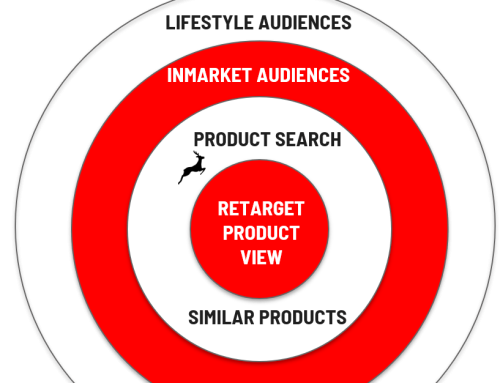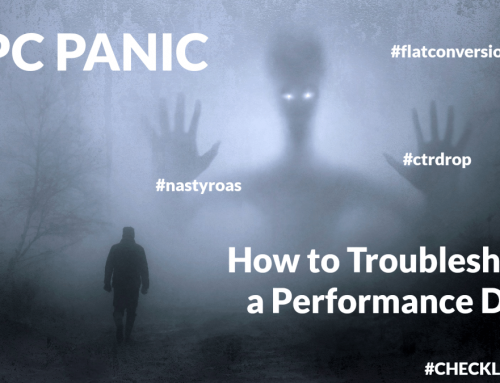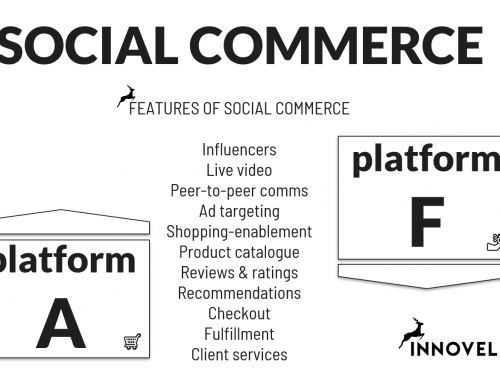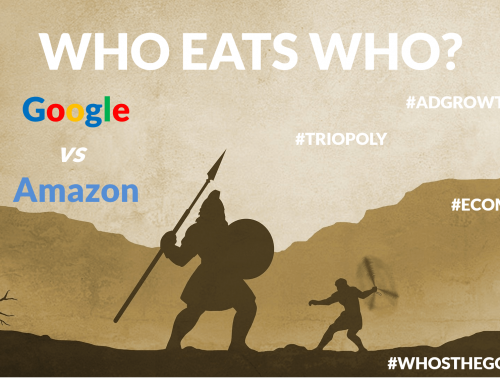Search Engine Advertising 2021: PPC on Autopilot?
Advertising is on a roller-coaster ride in the 2020’es. As one of the first budgets to be affected in times of uncertainty, advertising took a dip at the start of the pandemic. It also picked up for new types of advertisers. Then the entire underlying data set for targeting based on user behaviour changed, as people’s financial situations changed, as their relation to touching products and going to shops degraded, and as ecommerce picked up. And then ecommerce boomed and digital advertising rose to new heights again.
And under the hood, things are changing too. Artificial intelligence is making inroads into advertising management, new privacy legislation changes the use of data. And the disappearance of third-party cookies is promising to send shockwaves through the adtech industry.
All the while, the major platforms, also known as the triopoly of digital advertising, Google, Facebook and Amazon continue to experience double-digit growth at 20-40-60%. Search engine advertising, at the core of the Google offering is still on a positive and growing trend. This is despite saturation of click prices in mature markets. And despite a halted growth in the basic market of search, as the majority of the worldwide population now has access to the internet.
But if the the number of searches performed by users – the search market – is not growing, and if click prices, the basic monetization of searches, can’t rise any higher, where is the search advertising journey going? For Amazon, search is still growing, for Bing, the CPCs may not yet have hit the ceiling, but Google might be close to maxing out on those two growth dimensions. And so it is time to look inwards.

What Search Engine Advertising is today
Most search marketers who have been brought up with Google and Bing ads today agree that Amazon Sponsored Products should be considered as “paid search” too. But they can also get caught throwing display ads from the Google Display Network into the mix. Perhaps because those are still “pay per click”, or PPC, one of the other names search marketers often give to search engine advertising. Furthermore, the overlay of audience targeting which has arrived in search advertising engines in recent years is taking the focus away from the keyword.
Digital advertising is similar to financial investments today. You choose among a wide range of ad streams for which you try to predict future returns on the basis of past performance. Some are short term bets, others are long term. No outcome is ever guaranteed.
In the range of possible options, Search Engine Advertising represents a wide number of streams. Brand keywords, category keywords, automatic targeting, automated optimization and bidding, maximization of clicks or revenue or return on investment. Reliable and unfied tracking is key to succeeding.
But there are also some huge differences between financial investment and advertising. In finance, there is no hidden outcome, no organic growth, no retargeting pools, no brand effect and no synergy effects either. This is where advertising stops being scientific, it has a vast number of moving pieces which interact with each other.
What are the drivers of change in paid search?
For many years, search advertising was always the same: find the right keywords, write compelling ad copy, adjust bids for optimum visibility, send users to highly converting landing pages. It was spreadsheetable because the number of variables remained low.
Over time, however, more variables entered the equation: users morphed from desktop to smartphones, tablets and became multi-device users. The ads evolved with extensions and contextual elements to become multivariate entities with no fixed form or shape. And the audience targeting overlay made the number of variables explode. We explored all of these variables in our 2018 Search Trends report to conclude that something fundamental had changed.
Advertising engines started building optimization tools for managing this complexity. In Google, these tools are known as Smart Bidding. They take a wide range of variables into account, apply machine learning, and target one specific and measurable outcome. In the 2020ies, Smart bidding has become the norm rather than the exception. Search marketers are no longer testing between keywords, they are testing between algorithms.
Smart bidding is the arrival of artificial intelligence (AI) in ad optimization. But it is not the only thing happening. In our 2020 Digital Marketing Report, set in the context of COVID19, we identified radical changes in user behaviour, and disruption in the data as immediate effects of the sanitary crisis. But overlaying these trends, the penetration of AI, and the data challenges became apparent. Privacy legislation is changeing both user behaviour and tracking methods, and the large platforms are increasingly accumulating data and restricting marketers’ access to it. On top of AI, user behaviour and privacy legislation, we are also entering a user tracking paradigm shift as third-party cookies are being phased out and the concept of “cohorts” taking over.
6 inflexion points for PPC automation
Automation is what drove the industrial revolution, and it is also a major driver of the digital revolution we found ourselves amidst. So whenever a search engine suggests automation tools, does that mean you should use them? Let’s look at some good reasons for automating or not.
- SKAGS: “Single Keyword Ad Groups” were a thing. Some agencies even automated processes to build SKAGs in their client accounts. Where search advertising is going today, there are many cases in which SKAGs risk performing worse. Optimization algorithms pull in the opposite direction of the SKAG, as they take more variables into consideration.
- Smart campaigns: Google Ads has a highly automated campaign type known as the Smart campaign. It simplifies campaign creation down to the basics and requires no keyword research. For small operations with a clear goal and reliable tracking, this type of automation can create great results. Just don’t ask how it did it, as you will get very limited insights.
- Dynamic Search Ads (DSA): Enter a URL and let Google Ads find the keywords to target. Then hope to find some of them in search terms reports.
- Responsive Search Ads (RSA): Enter variations for titles and descptions and let Google Ads find the winning combination.
- Smart bidding: Various types of smart bidding exist with the common feature of using a wide range of variables to optimize a search campaign towards once precise goal. This includes bidding on branded keywords to generate more conversions.
- Google Data Studio, PowerBi: Automate reporting of your digital advertising campaigns into dashboards updated in real time.
For most of the items above, there can be a bit of a trade-off. Only the very last point on the list is a no-brainer: absolutely automate your reporting as much as humanly possible.
The challenge with automation is that it applies fast algorithms to sets of data. You need to be careful to provide the right data via reliable tracking and well-considered limits. If your tracking is not 100% reliable, automating campaigns will not work efficiently. If you leave the advertising engine define what data is included, you may see cannibalisation of other campaigns, of other channels.
Keep your eyes on the data and your foot on the accelerator
Search advertising is looking inward for growth. Its engines are aiming to monetize more of the search by using the data to its advantage.
Search advertising for small campaigns are easier to create than ever before. Search advertising for large campaigns is potentially more complex than before, as data access is becoming increasingly blurred, more algorithms are applied and targeting mechanism change. A good approach is to mix and match the various algorithms, and work actively on delimiting and providing the best data for your campaigns to work with.
Keep your eyes on the data and try to interpret it holistically across all your communication channels. Set your strategic goals and pin them down with the right KPIs, then use as much automation as you can to accelerate outcomes. Not quite the autopilot yet.
If you are interested in search trends and outlooks for digital marketing, you will find more in-depth analysis in our recent reports: “Major Trends in Paid Search”, “Paid Search Strategies”, “Marketing on Amazon” and “Digital Marketing in Uncertain Times”.





